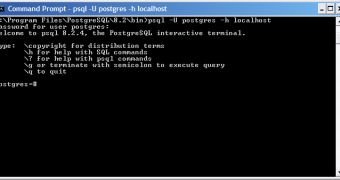PostgreSQL is an Open Source Software object relational database management system based on POSTGRES 4.2. POSTGRES was developed at the University of California at Berkeley Computer Science Department. The first version PostgreSQL was launched in 1996 and reflected the relationship between the original POSTGRES and the more recent versions with SQL capability.
To begin, download PostgreSQl and extract the file from the archive. Run postgresql-8.2.msi as an administrator. Select your language and check "Write detailed installation log to postgresql-8.1.log in the current directory". After you agree on the license, select what you want to install. Check everything from Database server and select the installation directory. If you want to install PostgreSQL as a service, check the option and write account password if you have one. The "Account name" refers to the Windows special user account that will be used to run the PostgreSQL database server. Next, you will be asked if you want to create the special user account; select Yes. If you want to create a powerful password, let the installer create one for you.
For the next step, the database cluster will be initialized and here you will have to create a new password for the internal database name. After that, select procedural languages to enable in default database. Procedural languages allow you to write user-defined functions other than SQL and C. Next. you can select contrib modules that provides additional and specialized functionality. The advice is don't enable any contrib module in the default database template. Click Next and then Finish.
Now you can create your first PostgreSQL using 2 methods: psql, which is a command line interface for PosgreSQL; and pgAdmin III, the graphical interface.
Using psql, you can connect to the database server with this command: psql -U postgres -h localhost. -U postgres means that you connect to user postgres and -h localhost means that you connect to the local database server.
More about PostgreSQL in the next article.

 14 DAY TRIAL //
14 DAY TRIAL //